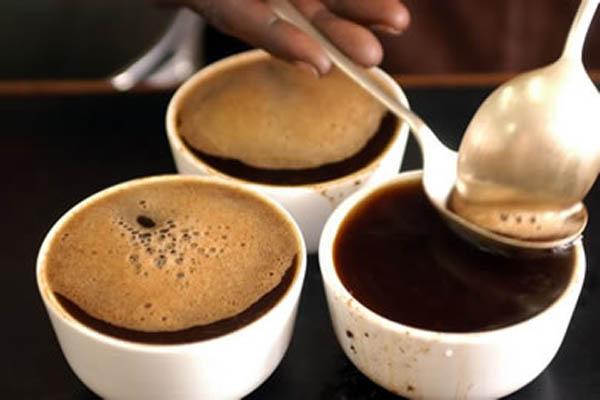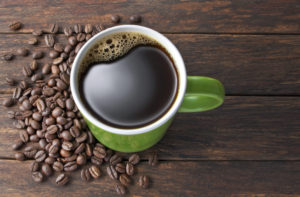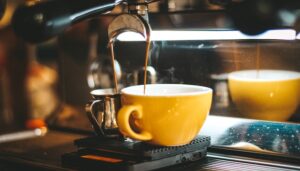
Coffee cupping is not just a tasting experience; it’s an art form that allows enthusiasts and professionals to evaluate coffee beans’ quality, flavors, and aromas. As coffee aficionados seek to elevate their coffee appreciation, understanding the intricacies of cupping is crucial. In this article, we delve into the nuances of “Coffee Cupping: The Art of Selecting the Best Coffee,” exploring various aspects, including the process, tools, flavor profiles, and its significance in the coffee industry.
The Basics of Coffee Cupping
Coffee cupping is a structured method of evaluating coffee beans. It involves smelling and tasting the brewed coffee, allowing experts to discern its unique attributes. LSI Keyword: coffee tasting techniques
The Process of Coffee Cupping
Coffee cupping follows a specific step-by-step process:
- Gathering the Beans: Acquire high-quality coffee beans from different regions worldwide.
- Roasting: Roast the beans to an optimal level, ensuring consistency and avoiding burnt flavors.
- Grinding: Grind the beans to a uniform particle size to ensure even extraction.
- Aroma Assessment: Smell the dry grounds to identify initial scents.
- Brewing: Add hot water to the grounds, allowing them to steep.
- Breaking the Crust: After steeping, break the crust formed on the surface, releasing intense aromas.
- Tasting: With a spoon, sample the coffee while noting flavors, acidity, body, and aftertaste.
The Importance of Coffee Cupping
Coffee cupping plays a crucial role in the coffee industry:
- Quality Control: Roasters and producers use cupping to ensure consistent coffee quality.
- Flavor Profiling: Cupping allows the identification of unique flavor characteristics, aiding in product descriptions and marketing.
- Bean Comparison: Comparing beans from different origins helps roasters select the best sources for specific blends.
Tools Required for Coffee Cupping
To perform coffee cupping effectively, certain essential tools are required. LSI Keywords: coffee cupping equipment, cupping supplies
Cupping Bowls
Specialized cupping bowls are shallow and wide, allowing tasters to access the coffee’s aroma easily.
Cupping Spoons
Cupping spoons have deep, round bowls to sip the coffee while slurping it for optimal flavor release.
Cupping Form
A cupping form helps record important details about each coffee, such as flavor notes, acidity, body, and more.
Exploring Flavor Profiles in Coffee
Each coffee bean possesses unique flavor characteristics influenced by factors such as origin, processing, and roast level. LSI Keywords: coffee tasting notes, coffee flavor wheel
Origin and Terroir
The region in which coffee is grown significantly impacts its flavor. Different regions offer distinct profiles due to variations in soil, climate, and altitude.
Processing Methods
The way coffee cherries are processed affects the final taste. Common methods include washed, natural, and honey-processed.
Roast Levels
Roasting coffee beans to different levels, from light to dark, imparts various flavor profiles, from fruity and floral to smoky and bold.
Unlocking the World of Coffee Cupping
Cupping sessions allow individuals to explore the diverse world of coffee flavors and regions. LSI Keywords: coffee cupping experience, coffee tasting event
Themed Cupping Events
Organize cupping sessions around specific themes, such as single-origin coffees or beans from a particular continent.
Blind Cuppings
In blind cupping, the tasters are unaware of the coffee’s origin, encouraging unbiased assessments.
Cupping Competitions
Competitions allow professionals to showcase their expertise and discover exceptional coffees.
FAQs (Frequently Asked Questions)
Q: What is the ideal grind size for coffee cupping?
A: For coffee cupping, a medium-coarse grind is recommended for optimal extraction and consistency.
Q: How should I evaluate acidity during coffee cupping?
A: Acidity is a bright and tangy characteristic in coffee; assess it by noting the sharpness or brightness of flavors.
Q: Can I reuse cupping bowls and spoons?
A: To maintain the integrity of evaluations, it’s best to use clean, unused cupping bowls and spoons for each session.
Q: How many coffees can I cup in one session?
A: The standard number of coffees to cup in one session is between six to ten to avoid palate fatigue.
Q: Should I taste the coffee or slurp it during cupping?
A: It’s essential to slurp the coffee from the spoon to aerosolize it and enhance flavor perception.
Q: Can I cup coffee at home without professional equipment?
A: While professional tools enhance the experience, you can conduct a simplified cupping at home using basic kitchen items.
Conclusion
Coffee cupping is an art that enables coffee enthusiasts and industry professionals to connect with the intricacies of coffee flavors and origins. By following the structured cupping process and exploring various beans’ flavor profiles, individuals can elevate their coffee appreciation and make informed choices. So, embrace the art of coffee cupping and embark on a journey of discovery through the world of the best coffee.








